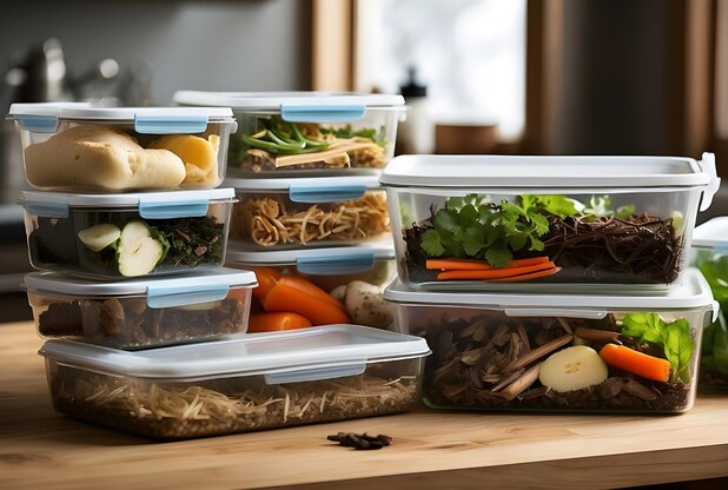Saving time in the kitchen is key to maintaining a healthy lifestyle while staying within budget. By using smart cooking techniques like batch cooking and creative use of leftovers, you can whip up meals quickly and avoid unnecessary waste. The following time-saving kitchen strategies will help streamline meal prep, cut down on food waste, and keep your budget in check. From batch cooking to smart storage solutions, these tips will ensure that delicious and nutritious meals are always ready when needed.
1. Free Up Time With Batch Cooking
One of the most effective kitchen time-saving methods is batch cooking. Preparing meals in large quantities not only saves time but also ensures that there are always ready-to-eat dishes in the fridge or freezer. Popular meals for batch cooking include hearty classics like curries, soups, and casseroles. These dishes are easy to make in bulk and freeze well for future use.
By dedicating a few hours each week to cooking several portions of a favorite meal, it becomes easy to grab something quick on busy days. For example, cooking a large pot of lasagna or bolognese sauce ensures that lunch or dinner is ready without additional prep time. Batch cooking is a simple way to free up time, reduce stress, and still enjoy home-cooked meals throughout the week.
2. Cook Many Meals in One Go

Image by freepik | Cooking multiple meals at once saves time and makes weekly meal prep more efficient.
Another great time-saving trick in the kitchen is cooking multiple meals simultaneously. When prepping for one dish, consider utilizing any spare stove or oven space to prepare a second dish. If you’re making soup, why not throw together a curry or a tray of roasted vegetables at the same time? This strategy uses similar ingredients and cuts down the time spent in the kitchen over the week.
Not only does this method reduce time, but it also helps in planning meals efficiently. By preparing many dishes at once, you're ensuring there’s always a meal ready, whether for that evening or later in the week. This kitchen time-saving method also reduces the number of times the stove or oven needs to be used, ultimately cutting down on energy costs.
3. Reduce Food Waste by Getting Creative
When it comes to reducing food waste, creativity goes a long way. Items like bread, bananas, or even cheese can be transformed into delicious meals or snacks instead of heading to the trash. Bread can be turned into croutons or breadcrumbs, and overripe bananas are perfect for baking.
For ingredients that seem destined for the bin, there’s often a clever solution. For instance, strawberry tops can be used to create strawberry vinegar by heating them with vinegar and adding a tangy twist to dressings. Garlic peels can be roasted and ground into garlic salt, a flavorful addition to any dish. By finding new uses for food scraps, you not only reduce waste but also discover new flavors and textures.
4. Reinvent Leftovers Into New Meals
Leftovers don’t have to be boring. With a bit of creativity, they can be transformed into entirely new dishes. A leftover chicken dinner can become the base for a fresh chicken noodle soup or even be shredded into tacos or quesadillas the next day. This approach not only cuts down on food waste but also brings variety to the table.
The key to reinventing leftovers is thinking outside the box. Turn roasted vegetables into a frittata or blend them into a creamy soup. By learning how to repurpose meals, not only is kitchen time saving achieved, but food budgets are stretched further, making it a win-win strategy for both time and money.
5. Don’t Fear Failure in the Kitchen
Cooking creatively can sometimes lead to mistakes, and that’s perfectly fine. Trying out new recipes, experimenting with ingredients, or reusing scraps may not always go according to plan. However, mistakes are valuable learning opportunities.
Fear of failure can often stop home cooks from trying new things. The key is practice. Mistakes help refine techniques, discover new flavor combinations, and develop confidence in the kitchen. Every culinary experiment, even those that don’t turn out as expected, brings you closer to mastering kitchen time-saving techniques.
6. Stock Up on Budget-Friendly Pantry Staples
Having a well-stocked pantry and freezer is essential for quick meal prep. Some of the most versatile staples include tinned lentils, beans, and vegetables. These items save time, as they are pre-cooked and ready to use in dishes like stews, salads, or soups.
Frozen vegetables are another excellent time-saver, offering the convenience of pre-chopped, ready-to-use ingredients. Tinned tomato soup, dried herbs, and spices are invaluable when it comes to adding flavor with minimal effort. By keeping these budget-friendly staples on hand, creating quick, flavorful meals becomes effortless.
7. Smart Storage for Leftovers and Prepped Meals

Image by Aiillustration&on freepik | Proper food storage ensures freshness and safety while reducing waste from leftovers and prepped meals.
Proper storage is crucial for maintaining food safety and maximizing the shelf life of cooked meals. Ensuring that meals are cooled completely before storing them in the fridge or freezer prevents bacterial growth and helps maintain freshness. Containers should be airtight, and clear labeling will help keep track of what’s available for future meals.
Many people often confuse "best before" with "use by" dates. While "best before" means the food may not reach its peak, it is still safe to consume. Understanding the difference between these labels helps reduce unnecessary food waste and ensures that leftovers are used efficiently.
8. Batch Cook Desserts Too
Batch cooking isn’t just limited to main meals—desserts can be prepped ahead as well. Cakes, brownies, and cookie dough are all excellent options for freezing and enjoying later. By preparing desserts in advance, it becomes easy to satisfy a sweet tooth without the added hassle of baking every time.








